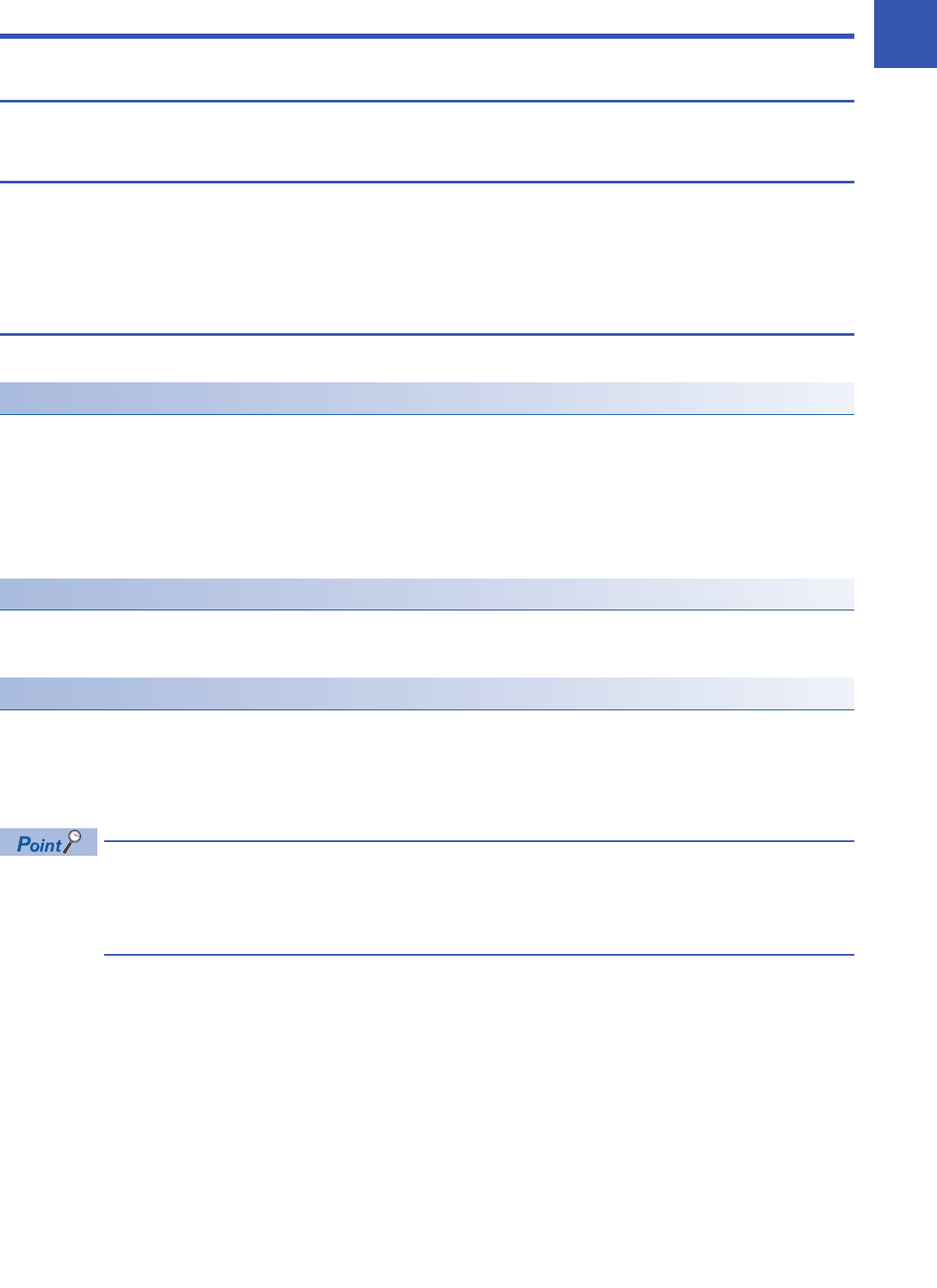
17 RAS FUNCTIONS
17.1 Self-Diagnostics Function
109
17
17 RAS FUNCTIONS
17.1 Self-Diagnostics Function
Checks if a problem exists with the CPU module.
Self-diagnostics timing
If an error occurs when the CPU module is powered on or while it is in the RUN/STOP state, the CPU module detects, and
displays it, and stops operation. However, depending on the error occurrence status or the instruction to execute, the CPU
module may not be able to detect the error. Configure safety circuits external to the programmable controller to ensure that
the entire system operates safely even in such a case.
Check method of error
This section describes the check methods when error occurs.
Check method using special relay and special register
When the CPU module detects an error, it turns SM0 (Latest Self-diagnostics error (annunciator on included)) and SM1
(Latest Self-diagnostics error (annunciator on not included)) on and stores the error code corresponding to the error definition
in SD0 (diagnostics error). If multiple errors are detected, the latest error code is stored in SD0. Use SM0, SM1, and SD0 on
the program for the CPU module or mechanical interlock. Besides, the error code up to 16 pieces for the error contents being
currently generated will be stored into SD10 (Self-diagnostics error code) to SD25 (Self-diagnostics error code). (The error
code for the error content of 17th piece on and after will not be stored.)
Check method using LED
The error occurrence conditions can be checked through the lighting conditions of ERR LED. (MELSEC iQ-F FX5U User's
Manual (Hardware), MELSEC iQ-F FX5UC User's Manual (Hardware))
Check method using the engineering tool
The error being currently generated can be checked in the Module diagnostics window. (GX Works3 Operating Manual)
■Existing errors
Up to 16 errors (description of errors) currently existing in the CPU module can be displayed. However, even when an
additional error occurs after a stop error, the error information is not refreshed.
The maximum number of displayable errors is 15 for continuation errors and 1 for stop errors. When 15
continuation errors are displayed and another one occurs, description of the new error is not displayed. Also,
when an error with the same code has already been displayed, the date and time of occurrence and detailed
information of the relevant error are not updated.


















